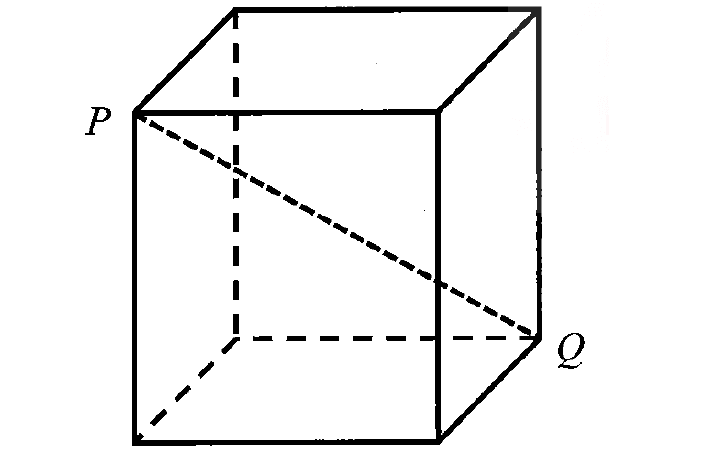HOW TO SKETCH THE GRAPH OF THE FUNCTION IN THE GIVEN INTERVAL
Sketch the graph of each of the following functions on the interval [−1.3, 1.3].
Example 1 :
f(x) = x3 + 1
Solution :
For the given function f(x), the basic function is g(x) = x3.
Then, the given function can be written as
f(x) = g(x) + 1
So, there is a vertical translation of 1 unit up.
To get the graph of the given function f(x) on the interval [-1.3, 1.3], we have to shift the graph of the basic function g(x), verticaly up by 1 unit.
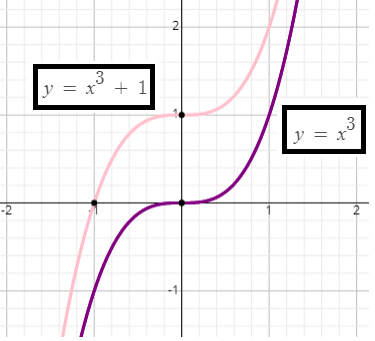
Example 2 :
f(x) = x4 − 1.5
Solution :
For the given function f(x), the basic function is g(x) = x4.
Then, the given function can be written as
f(x) = g(x) - 1.5
So, there is a vertical translation of 1.5 units down.
To get the graph of the given function f(x) on the interval [-1.3, 1.3], we have to shift the basic function g(x) verticaly down by 1.5 units.
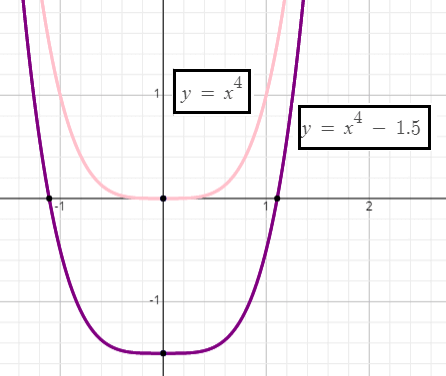
Example 3 :
f(x) = 2x3
Solution :
For the given function f(x), the basic function is g(x) = x3.
Then, the given function can be written as
f(x) = 2g(x)
So, there is a vertical strech by a factor of 2.
To get the graph of the given function f(x) on the interval [-1.3, 1.3], we have to strech the basic function g(x) verticaly by a factor of 2. That is, y-coordinate of each point on the basic function has to be multiplied by 2 and x-coordinate has to be kept as it is.
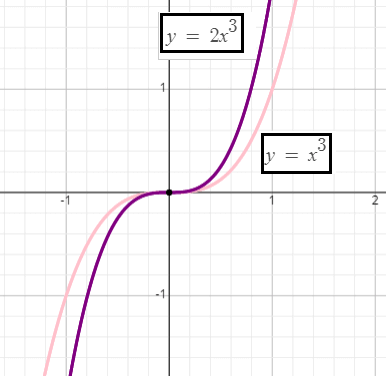
Example 4 :
f(x) = -2x4
Solution :
For the given function f(x), the basic function is g(x) = x4.
Then, the given function can be written as
f(x) = -2g(x)
On the right side, since g(x) is multiplied by -2, we have to do the following two transformations.
g(x) multiplied by 2 ----> vertical stretch by a factor 2
negative sign in front of 2g(x) ----> reflection over x-axis
To get the graph of the given function f(x) on the interval [-1.3, 1.3], we have to strech the basic function g(x) verticaly by a factor of 2. That is, y-coordinate of each point on the basic function has to be multiplied by 2 and x-coordinate has to be kept as it is. Then, we have to reflect the graph over x-axis.
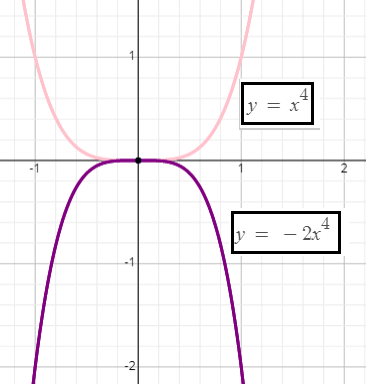
Example 5 :
f(x) = -2x4 + 3
Solution :
For the given function f(x), the basic function is g(x) = x4.
Then, the given function can be written as
f(x) = -2g(x) + 3
On the right side, since g(x) is multiplied by -2 and 3 added to it, we have to do the following three transformations.
g(x) multiplied by 2 ----> vertical stretch by a factor 2
negative sign in front of 2g(x) ----> reflection over x-axis
3 is added to -2g(x) ----> vertical translation by 3 units up
To get the graph of the given function f(x) on the interval [-1.3, 1.3], we have to strech the basic function g(x) verticaly by a factor of 2. That is, y-coordinate of each point on the basic function has to be multiplied by 2 and x-coordinate has to be kept as it is. Then, we have to reflect the graph over x-axis. Finally, we have to shift the graph vertically up by 3 units.
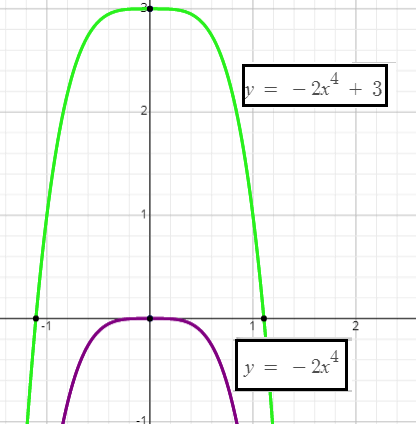
Kindly mail your feedback to v4formath@gmail.com
We always appreciate your feedback.
©All rights reserved. onlinemath4all.com
Recent Articles
-
Digital SAT Math Problems and Solutions (Part - 152)
Apr 28, 25 11:54 AM
Digital SAT Math Problems and Solutions (Part - 152) -
Digital SAT Math Problems and Solutions (Part - 151)
Apr 26, 25 11:18 AM
Digital SAT Math Problems and Solutions (Part - 151) -
AP Calculus BC Problems with Solutions
Apr 26, 25 05:49 AM
AP Calculus BC Problems with Solutions
